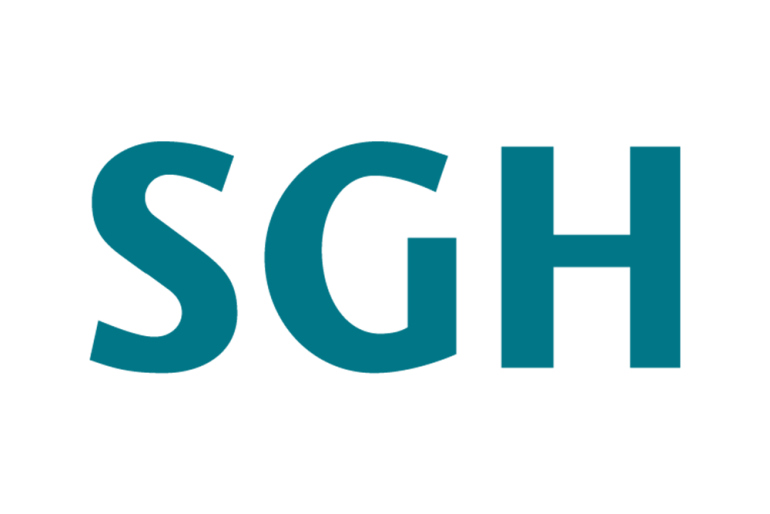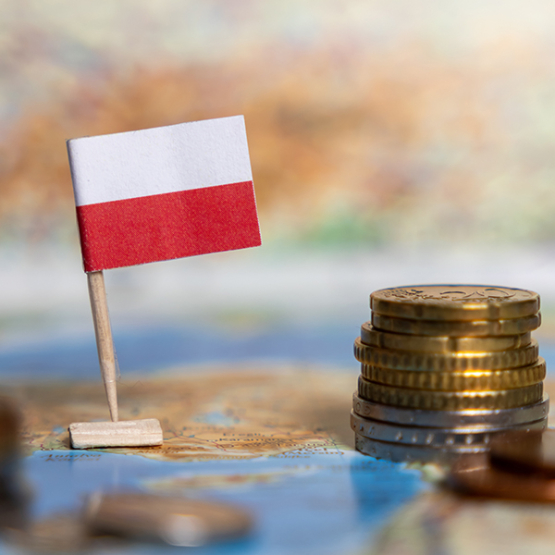
Creating a strong brand should be an important element of managing the organisation, including institutions such as universities. In this process, an important role is played by the monitoring of various dimensions of the brand evaluation. In the TOP MARKA (TOP BRAND) 2024 survey, the Warsaw School of Economics was rated the third strongest brand among universities for another year.

The basic components of the SGH branding are the basic logo and the extended logo (the acronym SGH and the full name).
In official situations, the Rector and the highest authorities of the university use the emblem. When creating it, the rich heritage of the university was kept in mind. The inspiration was the historical coat of arms, original seals and customarily used lettering.
Both logos and the emblem are registered Community Trademarks and have legal protection in the European Union.
Brand evaluation is performed from the perspective of (1) brand equity, (2) brand strength and (3) brand value, which refer to two key dimensions of brand evaluation, i.e. (a) the marketing dimension (assessment of brand equity and strength) and (b) the financial dimension, related to the valuation of brand value as an intangible asset of the organisation.
Brand equity (also referred to in the literature as Consumer Based Brand Equity – CBBE) is defined by D. Aaker (1996) as a set of assets and liabilities related to a brand, its name, symbol, which determine the value (utility) of a product (goods or services) marked with a brand for the buyer. The key attributes of brand equity are: (1) brand awareness, i.e. the ability of a current or potential buyer to recognise and/or recall that a given brand is assigned to a specific product category, (2) brand loyalty, i.e. a combination of buyers’ attitudes and behaviours reflecting their tendency to constantly buy products of the same brand and their attachment to it, (3) brand image, which may consist of, for example, associations with the product (product range, product attributes, quality, value, use, users, country of origin), with the organisation (organisational attributes, range of operation: local or global); associations with a person (personality, brand-buyer relationships), with brand symbols (visual brand form, brand reputation, metaphor related to the brand), and (4) perceived brand quality, i.e. subjective quality perceived and attributed to the brand by buyers. In many cases, the perceived quality is a fundamental element of the brand image. The brand strength is linked to the market position of the brand and is identified with the strength of buyers’ demand for products marked with this brand in relation to the demand for products of competing brands. On the other hand, the value of brand is combined with the monetary valuation of the brand as an intangible asset of the company. It should be emphasised that the strength of the brand is determined by the brand capital and has an impact on its value, and a brand with a significant capital, strength and value is an important factor in increasing the value of the organisation.
The growing significance of brands in the strategies of both business companies and non-for-profit institutions has resulted in the development of various methods of brand evaluation, as well as the creation of many brand rankings.
The methods of brand evaluation include
(1) marketing (psychographic/behavioural) methods of brand evaluation, which are characterised by a qualitative approach to brand evaluation and refer to psychographic and behavioural, i.e. related to the behaviour and attitudes of buyers, determinants of brand equity (including, for example, the concept of brand equity assessment according to D. Aaker);
(2) financial methods of brand valuation, i.e. quantitative procedures for the monetary valuation of the brand, including the cost-based valuation method, the royalty relief valuation method, the market-based valuation method);
(3) mixed financial and marketing methods of brand evaluation, in which both quantitative, also financial and qualitative indicators of assessing the market, psychographic and profitability position of a given brand are used (e.g. the method developed by the consulting company Interbrand),
(4) other, including e.g. portfolio methods of brand evaluation, which consist in the creation of relative brand evaluation indexes.
For many years, numerous institutions have been preparing brand rankings. They apply various methodologies, including various approaches to brand evaluation as well as various indicators of their evaluation. In addition, these rankings vary in terms of geographical coverage (rankings on brands in a given country versus rankings in an international dimension) and also include brands of different types of organisations (e.g. only corporate brands or brands of other institutions, e.g. non-profit, cultural or sporting organisations). The best-known rankings of international brands include, for example, the Internbrand Best Global Brands ranking (https://interbrand.com/best-global-brands/), Brand Finance Global 500 (https://brandfinance.com/insights/global-500-2024-report), Kantar BrandZ Most Valuable Global Brands (https://www.kantar.com/campaigns/brandz-downloads/kantar-brandz-most-va…). On the Polish market, we have rankings like Rzeczpospolita Ranking of the most valuable Polish brands (https://rankingi.rp.pl/rankingmarek/2021), TOP 200 of the best Polish brands – ranking of the “Forbes” magazine and the research company Minds & Roses (https://www.forbes.pl/rankingi/top-200-najlepszych-polskich-marek-ranki…).
One of the rankings of brand evaluation on the Polish market is “500 strongest brands in Poland. Top Marka“ prepared by the Press magazine and PSMM Monitoring & More, including an overall ranking and 50 industry rankings. Due to the adopted method of evaluating brands, this ranking should be included in the category of “other methods”. This is because it is – as the authors of the study declare themselves– a comparison of the evaluation of brands with the use of indicators measuring only their presence/visibility in the media (“media coverage”), such as: (1) “impact” indicator estimating the reach of publications to their addressees based on data on the consumption of a medium, (2) a sentiment index assessing the quality of the brand message in the media based on the share of positive, neutral and negative publications in the total message about the brand, and (3) total number of publications about the brand in the analysed period. Thus, it cannot be stated – as the authors of the ranking say – that it assesses the “strength” of brands, because the indicated measures are at most used to assess their “media power”, i.e. the effectiveness of reaching consumer awareness of messages about the brand in the media. However, taking into account a significant and growing role of the media, especially social networks, in creating social opinion as well as brand awareness, its image and, indirectly, brand loyalty, it should be emphasised that the assessment and position of the brand in this ranking should be taken into account by the brand administrator as important indicator to assess the effectiveness of the strategy for developing the brand capital and market power.
The latest edition of the Top Marka 2024 ranking was based on a survey that included over 1.4 million press texts, 11.9 million publications on web portals, 18.2 million posts published on Facebook, Instagram, X and YouTube social networks, which were published between 1 July 2023 and 30 June 2024, which is not without significance for the results of the survey, because at that time the media focused primarily on the issues related to the elections to the Sejm and Senate, local governments and the European Parliament.
A specific methodology of this report and the period of implementation of the survey is reflected in its results, including the strong position of brands from the media market, in the overall ranking, the Onet (web portal) brand was rated first just as last year, WP (web portal) – second, gazeta.pl (web portal) – fourth, 5th – TVN (television) – fifth, Polsat (television) – sixth.
The results of the Top Marka 2024 survey confirmed a significant media power of the SGH brand, especially among Polish universities, as for another consecutive year the SGH Warsaw School of Economics was rated 3rd in the sectoral ranking of “Universities”, just behind the brands of the two largest Polish universities, i.e. the University of Warsaw (first) and the Jagiellonian University (second), and ahead of the brands of much larger scientific institutions than SGH such as the Warsaw University of Technology (fourth) and Adam Mickiewicz University in Poznań (fifth). It should be noted that in the overall ranking of 500 Polish brands in 2024, SGH was rated significantly better – 65th compared to the results in the 2023 ranking (110th), with the ratings of individual media measures for the SGH brand for 2024 as follows: impact index – 499,833,945, sentiment index – 2.01 and total number of publications – 42,063.
These data also confirm an intense media activity of the SGH Warsaw School of Economics aimed at strengthening the capital and strength of the university brand.

Professor MARZANNA K. WITEK-HAJDUK, Department of International Business, Collegium of World Economy, SGH, Head of Postgraduate Studies in Brand Management
References:
Aaker, D. Building strong brands. The Free Press, 1996.
Witek-Hajduk, M.K. Zarządzanie marką. Difin, 2001.
Witek-Hajduk, M.K. Międzynarodowe strategie marek. Perspektywa przedsiębiorstw z rynków wschodzących. Oficyna Wydawnicza SGH, 2020.
Witek-Hajduk M.K., Duliniec A. Finansowe i marketingowe aspekty wyceny marki. In: H. Brdulak, E. Duliniec, T. Gołębiowski (ed.), TRANS ’07: Wspólna Europa: tworzenie wartości przedsiębiorstwa na rynku Unii Europejskiej. Oficyna Wydawnicza SGH Warszawa, 2007, pp. 441–450.
https://www.imm.com.pl/znamy-500-najsilniejszych-brandow-w-polsce-badan…
https://nowymarketing.pl/znamy-500-najsilniejszych-brandow-w-polsce-bad…



